Submitted by WA Contents
Jiejie studio wraps this tea room with a peach garden with rocky and forest landscape in Beijing
China Architecture News - Jan 27, 2021 - 13:46 4500 views

Jiejie studio has wrapped this tea room with a peach garden that features rocks and forest landscape in Beijing, China, which offers a peaceful atmosphere to be calm and focus on only drinking of tea.
The project, named Pushe Tea Room, the 80-square-metre space is located in an office building beside the third ring road in Beijing, surrounded by high-rise buildings and is located in a typical modern block of a big city.
The studio intended to achieve to design a space that evokes the perception of being separated from the world by tea drinkers, and then to enrich the spatial experience of the tea room.
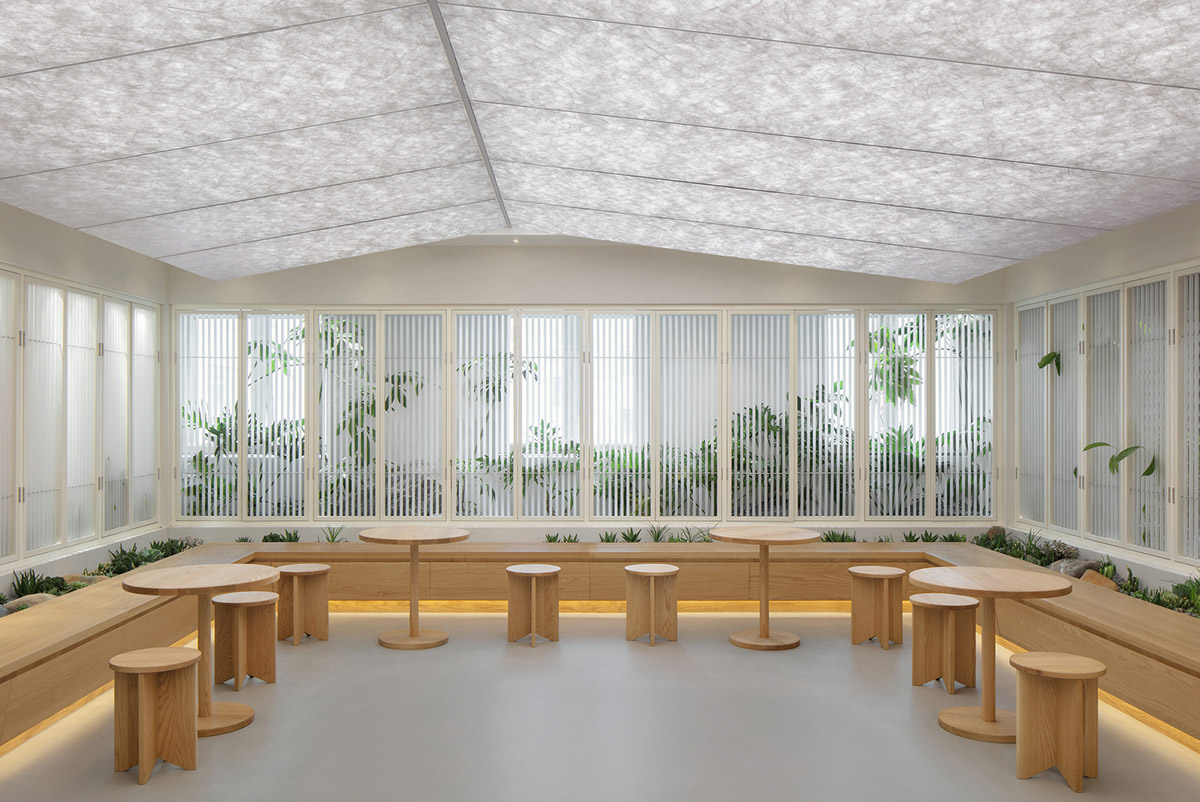
The interior comprises wooden seating places, leaf-shaped windows, small-scaled amphitheater-like stairs, a surrounded garden and a small tea pavilion raised on slender stilts. The main space of the tea room provides the functions of gathering, sharing, and daily tea drinking.

"The visitor could go up to the fourth floor by taking the elevator and enter the tea room through a long, plain, and blurred passage. This is a travel space that is detached from the five senses of the world in terms of perception," said Jiejie studio.
"It is also a space that suggests the visitor entering a state of extraordinary subconsciousness."
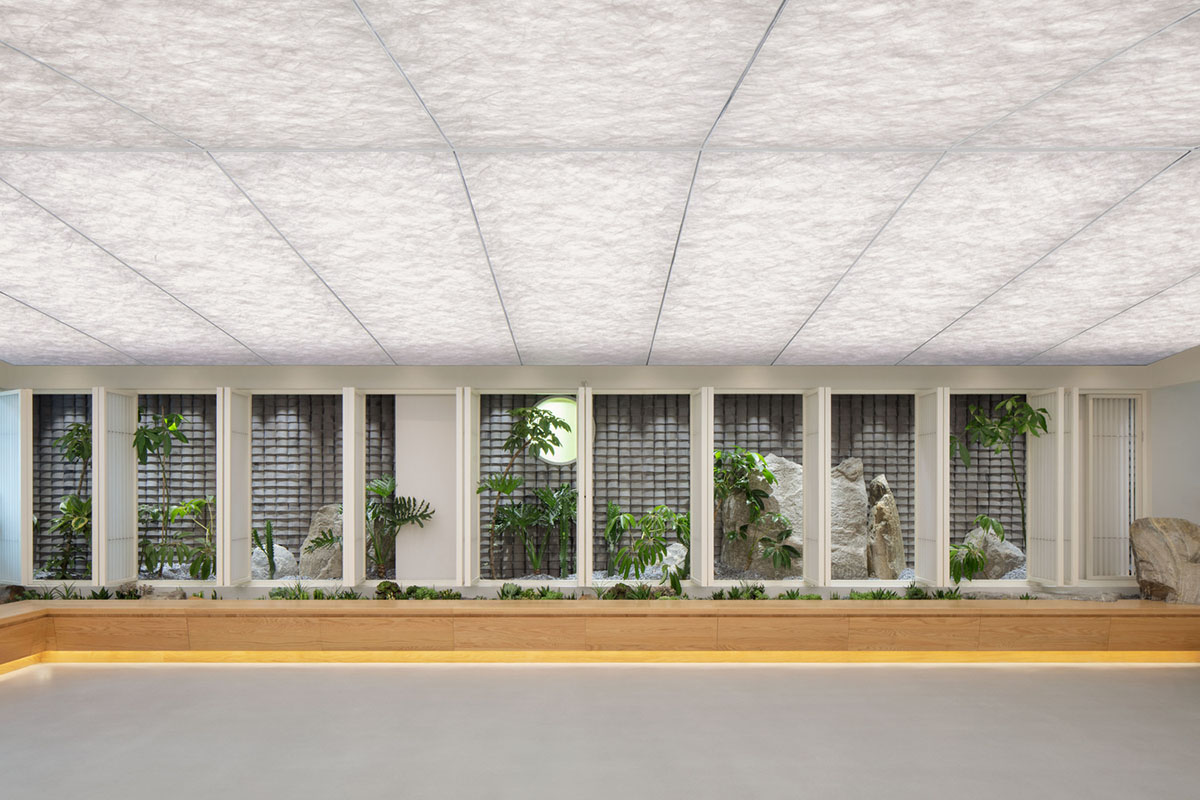
"It is the prelude to entering into the illusion of a peach garden which has a totally different scene, and it is also an experience that begins to start a dreamland," the studio added.
"The door of the tea room is a leaky door of which shape is similar to the shapes of the leaf shape and the moon, being conspicuous and eye-catching."

The architects added that "After passing through the moon gate, the visitor could see the stepping stone for the mountain forest experience. then stepping over this stone, the visitor will be formally in the space of the Pushe Tea Room."
"The design of the four faces outside appearances the roof uses inverted collage design techniques greatly, making this indoor space scene to seem to be outdoor," added the studio.

In the east side of the tea room, there is the face of the forest. There is a pavilion on the mountainside, standing beside the bank of the mountain stream. The shape of the windows of the mountain pavilion takes cues from the shape of the "leaf" in the classical garden.
Outside the mountain, through the leaf windows of the pavilion, visitors are able to see the cliffs and landscapes of Washan Mountain on the opposite side. The room incorporates a series of strange rocks under the pavilion combining the pavilion from the surrounding mountain and forest landscape.

When visitors enter into the pavilion from the side, they are able to see the cliffs and mountain streams in the room as well as see the dim lights of the city in the distance.

There is a platform at the foot of the mountain, located at a fork in the mountain road. "The terrain is flat and open. There are pretty trees on top and a place to sit on the bottom where you can cook the tea and listen to the Chinese zither."
There is a table for cooking tea at the foot of the mountain under the tree which could be seen. "The tea pavilion and the tea cooking station constitute the visual viewing center of the entire tea room on the east side."
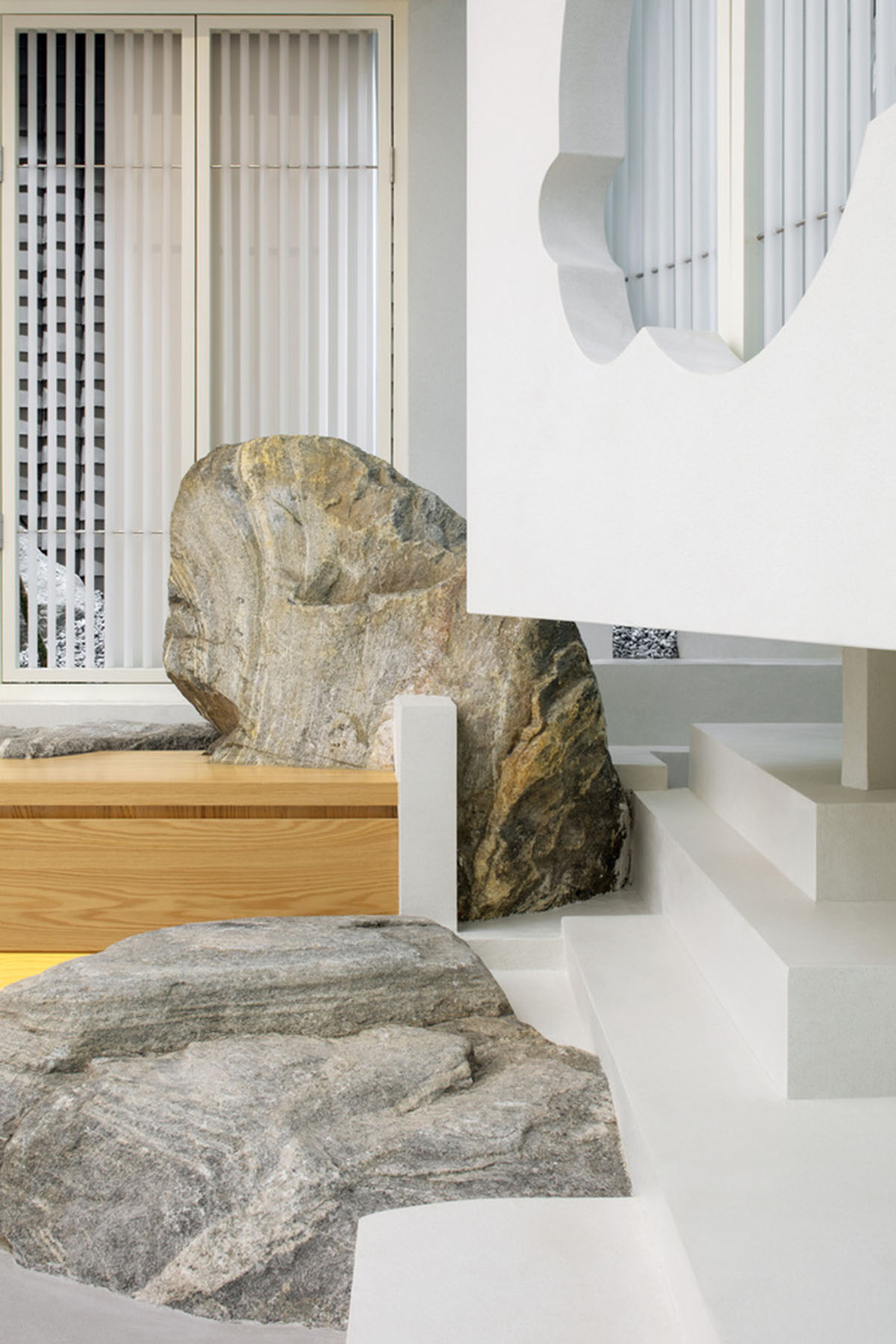
The forest itself has been designed as a very narrow street which is a 60 cm wide shallow space, which has blue tiles to evoke the shape of Bishan Mountain.

It also uses a round window to simulate a full moon, opening to the moon of the city. "The walls of the mountain are interspersed with shallow and real rocks that resemble the ups and downs of the mountains, and the shapes of the mountains are greatly different," according to the architects.

"Look to Bishan Mountain on the north side of the tea pavilion. Dense forests are planted on the west and south sides, which are stretching continuously just like the mountain."
The studio said that "From ancient times to now, all Chinese people seem to have the fantasy of living in a mountain. This space topic is repeatedly shown in the design of this project."
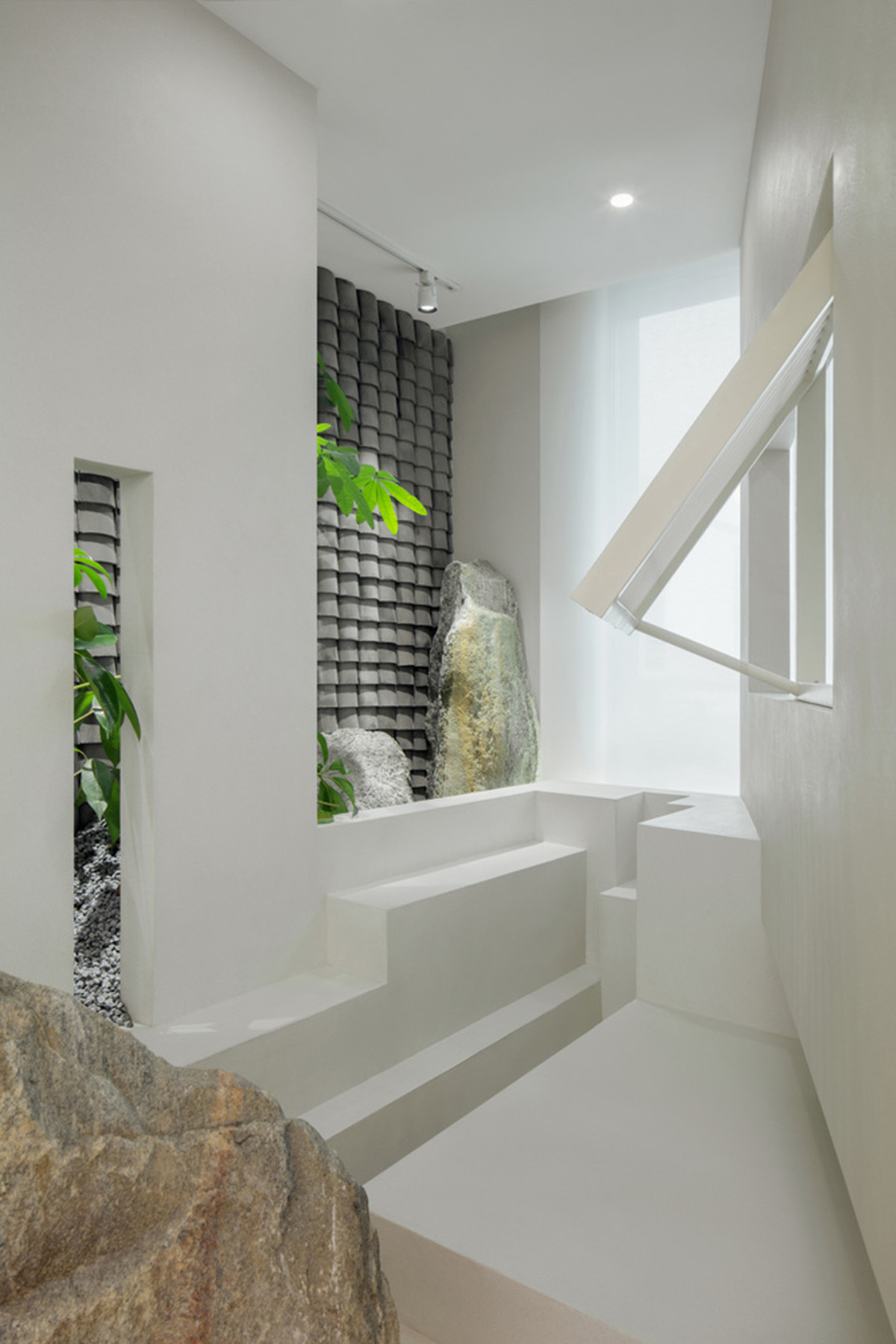
"The intention of the design space for the entire Pushe Tea Room is just like this, to implant various nesting internal and external space by adopting the dislocation techniques in the site."
"The intention is to use such a spatial experience to correspond to the indoor and outdoor relationship between the "city" and the "natural space", and at the same time, it alludes to echo the relationship between "busy and tranquility" and "outside world and inner heart"."
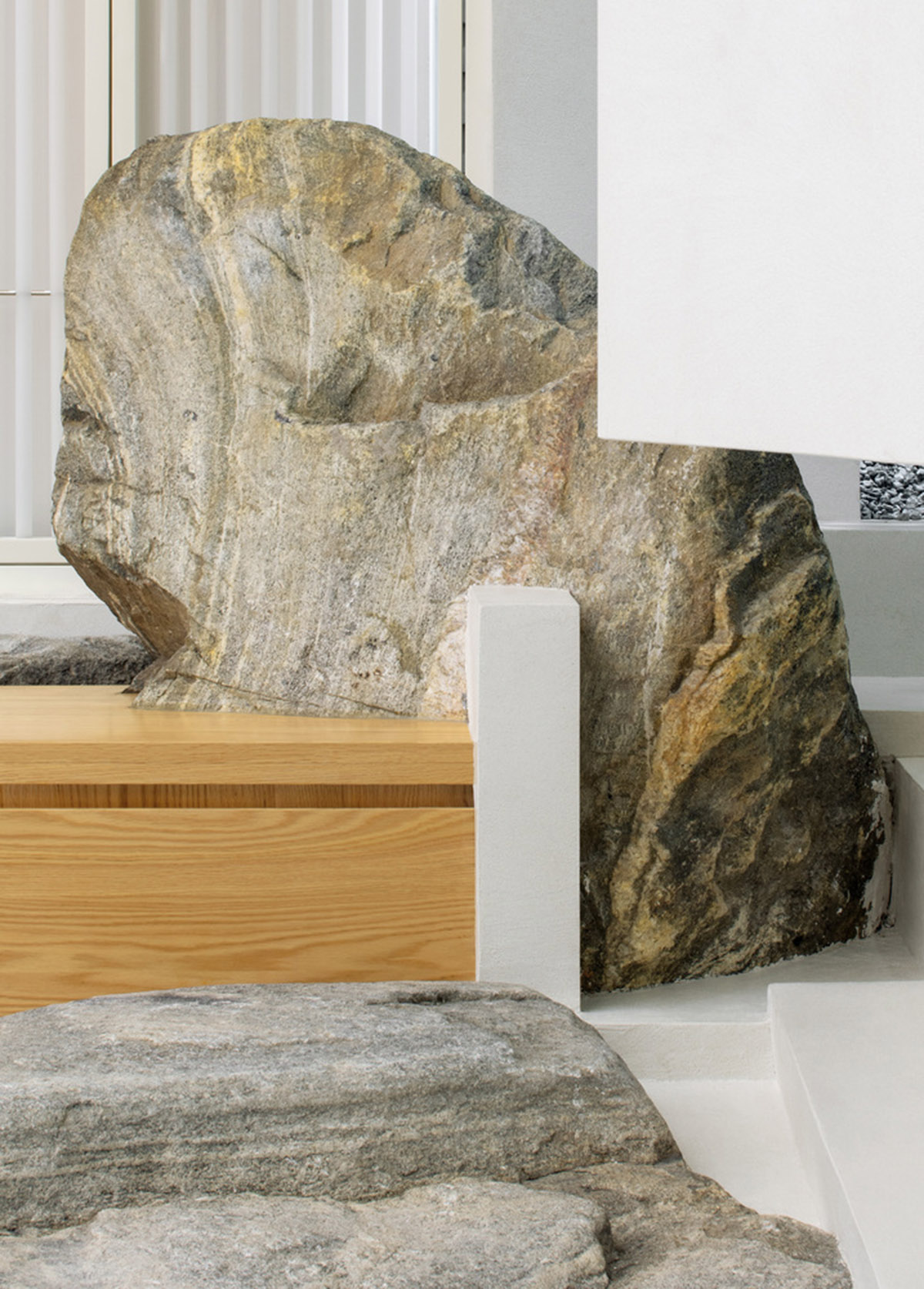


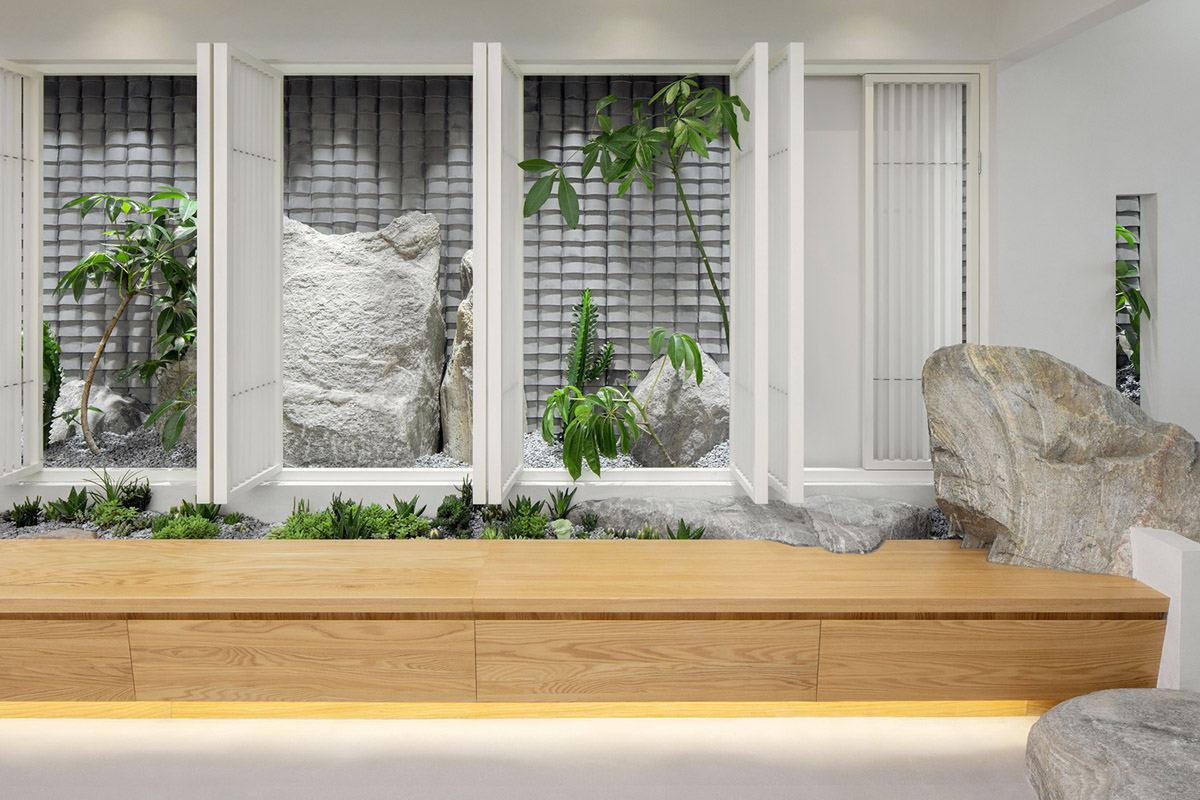
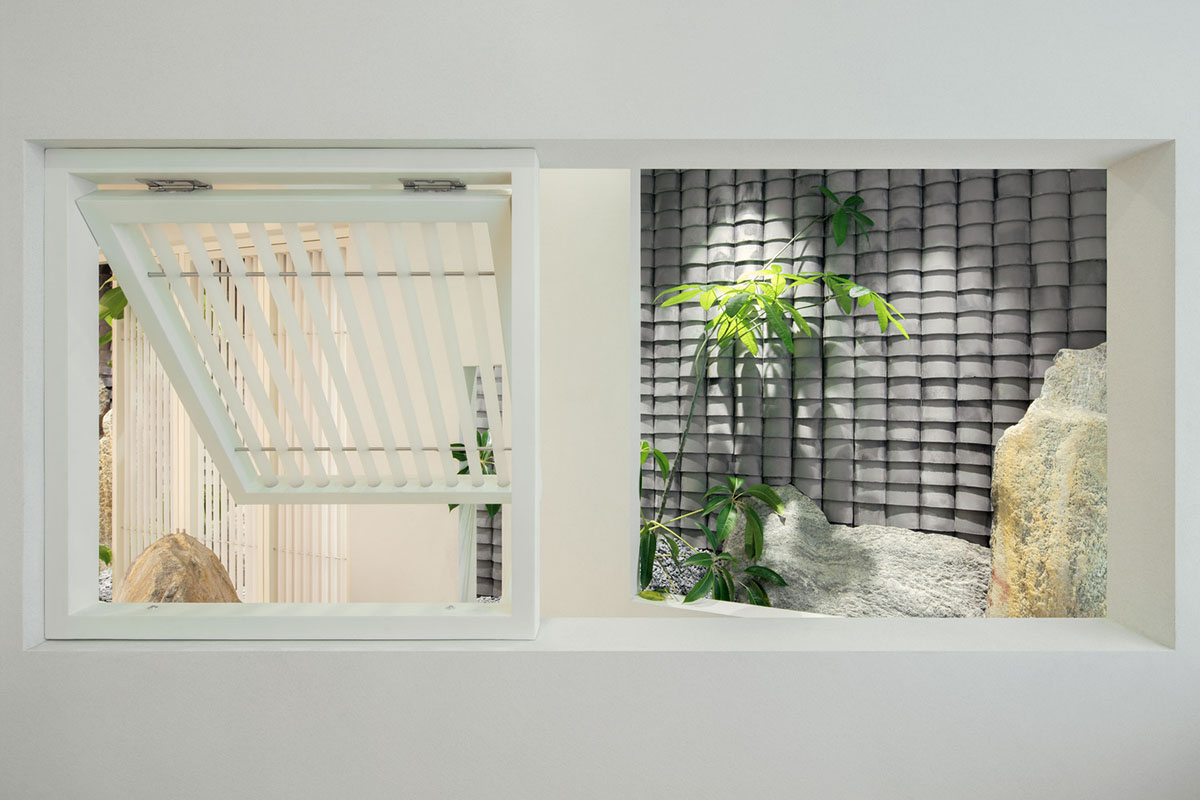
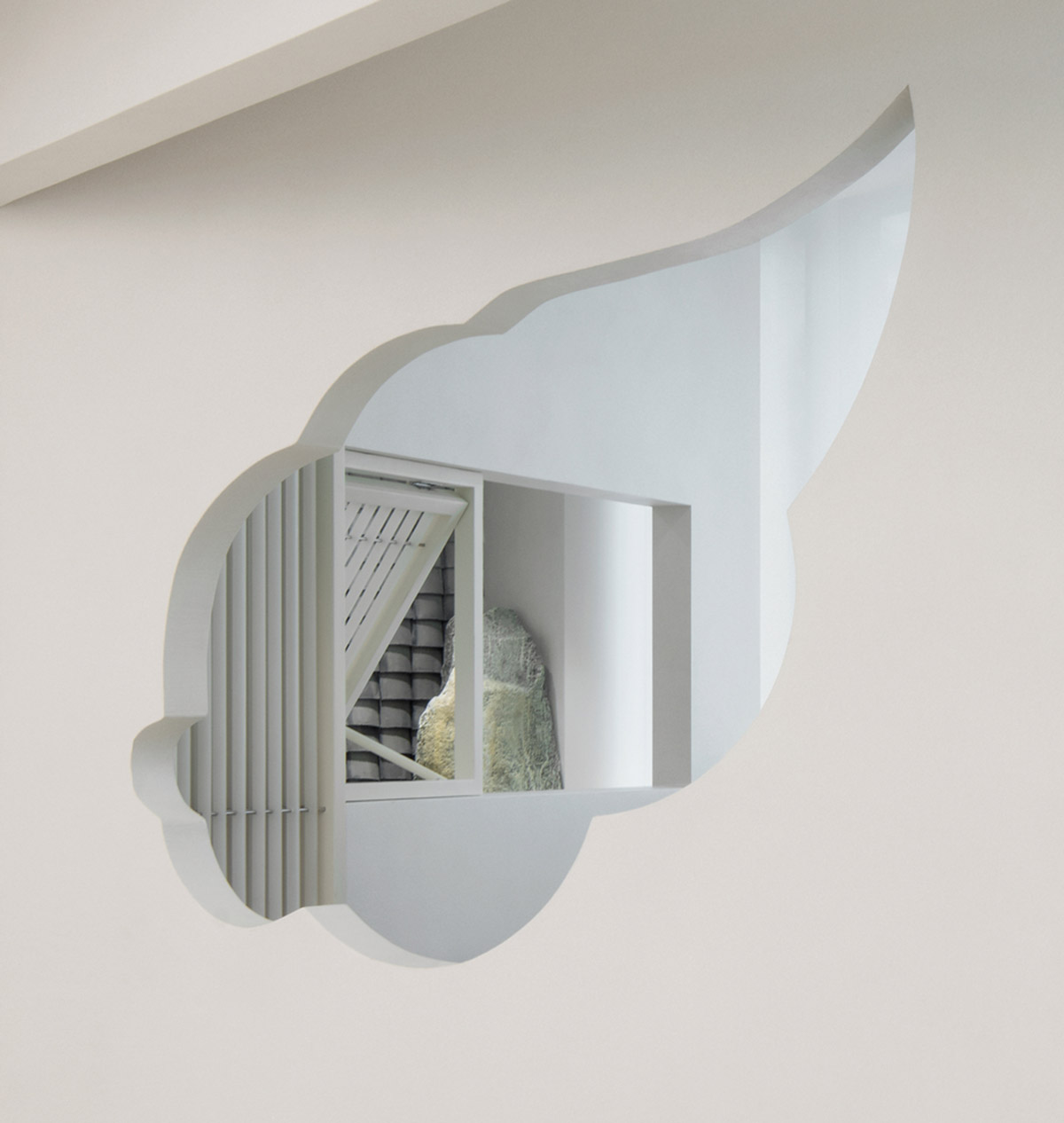
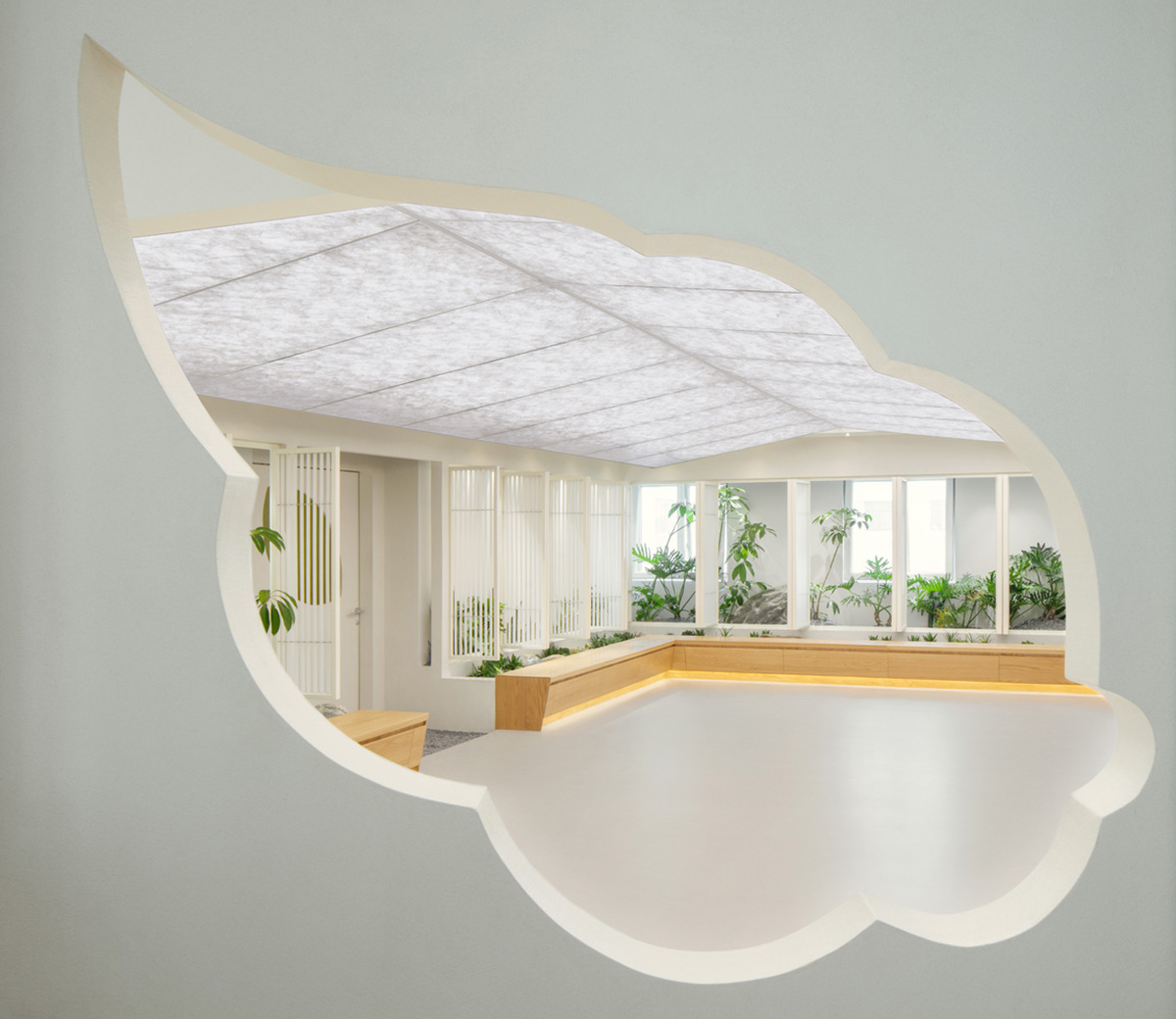

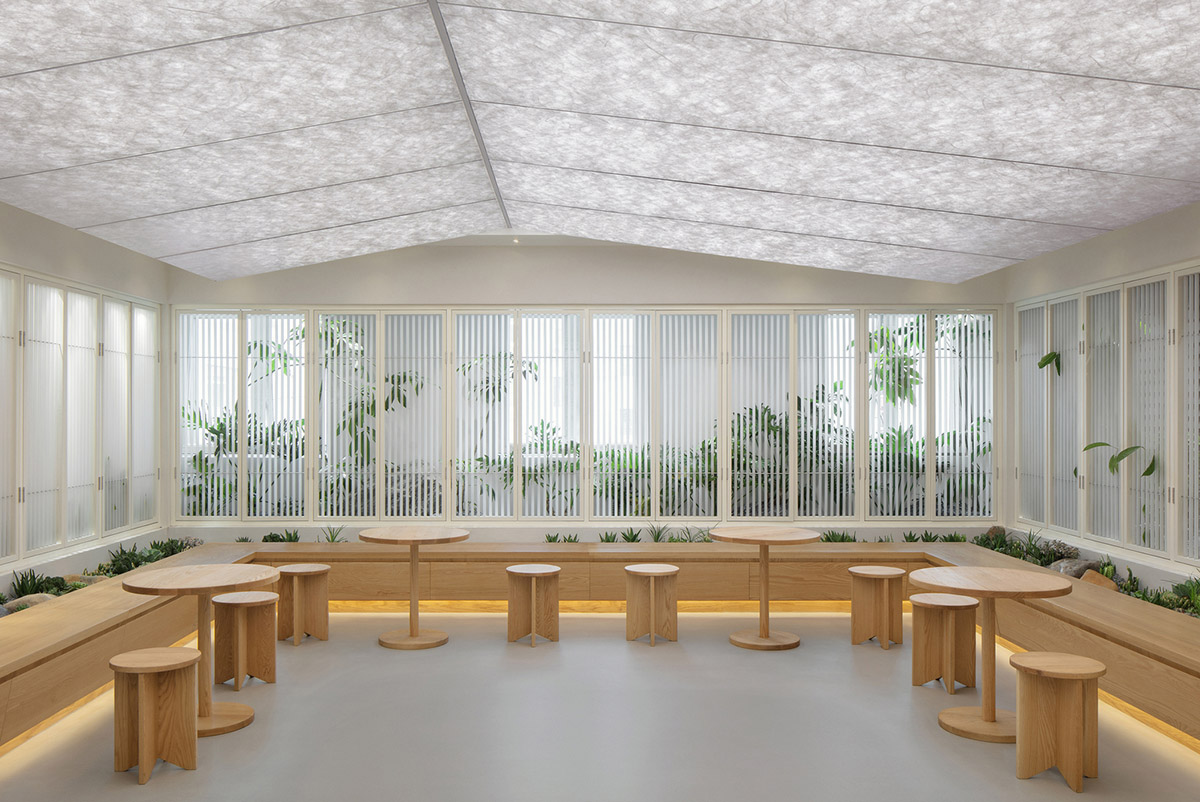
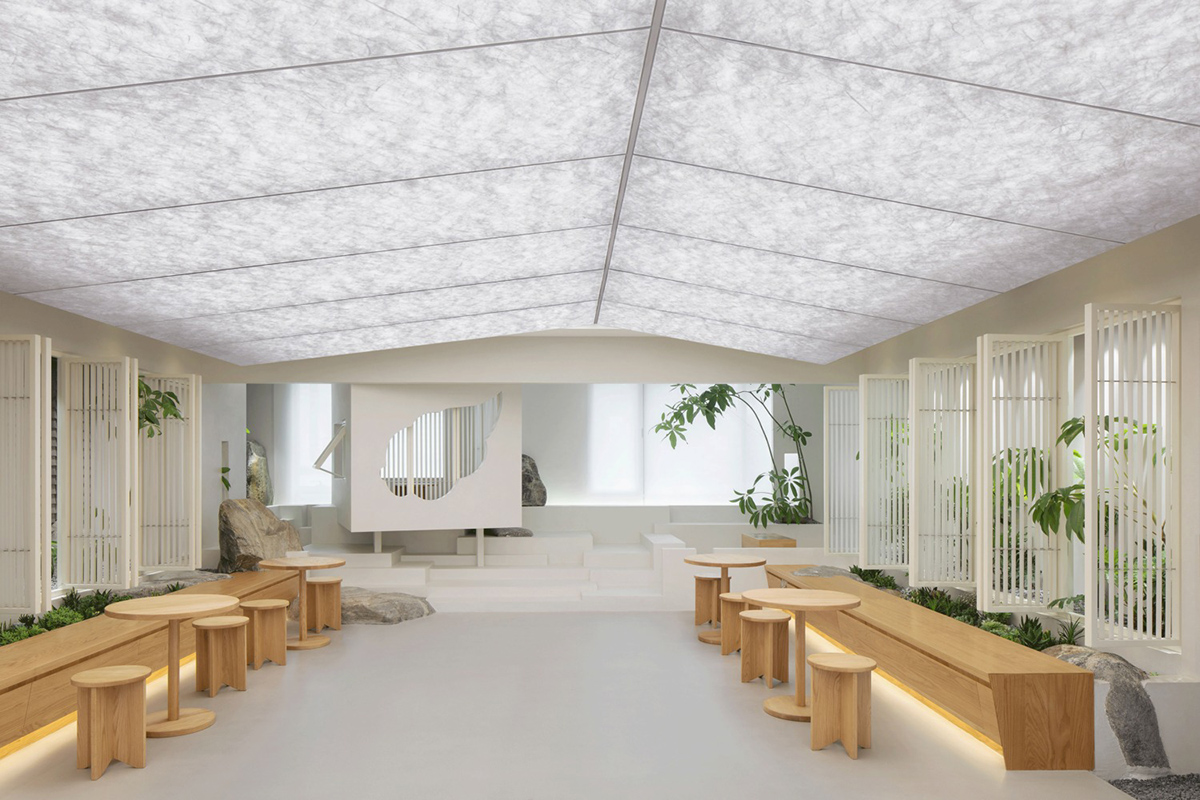
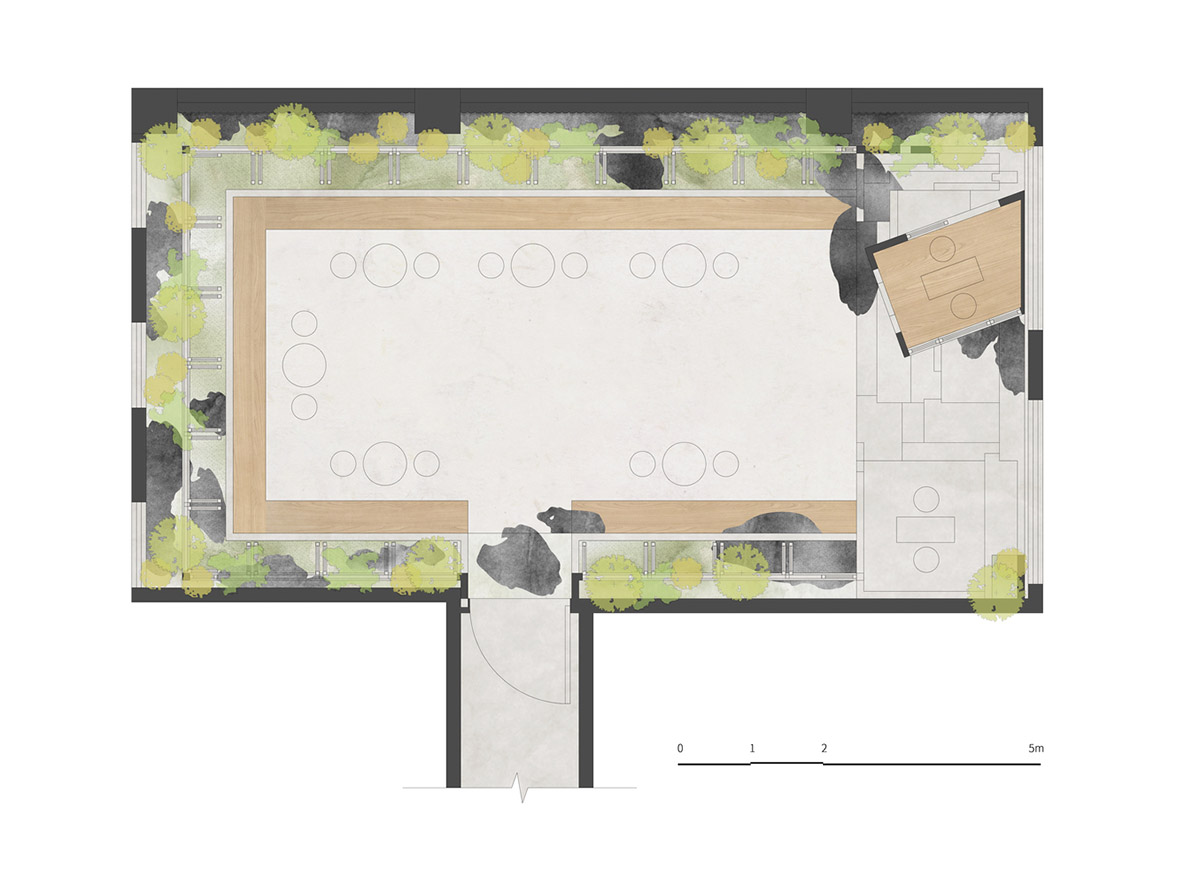
Plan

Diagram

Diagram
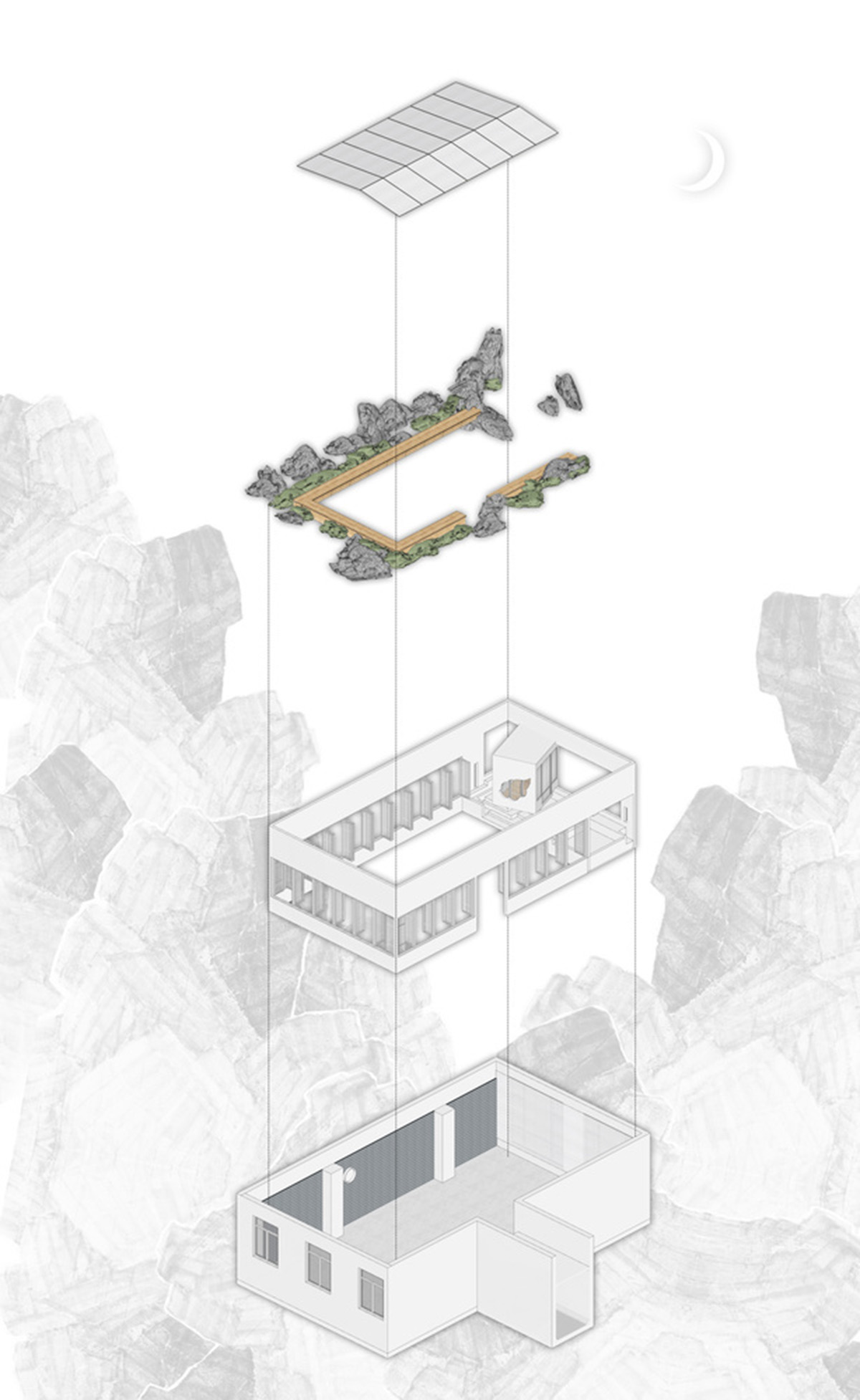
Axonometric diagram

Section
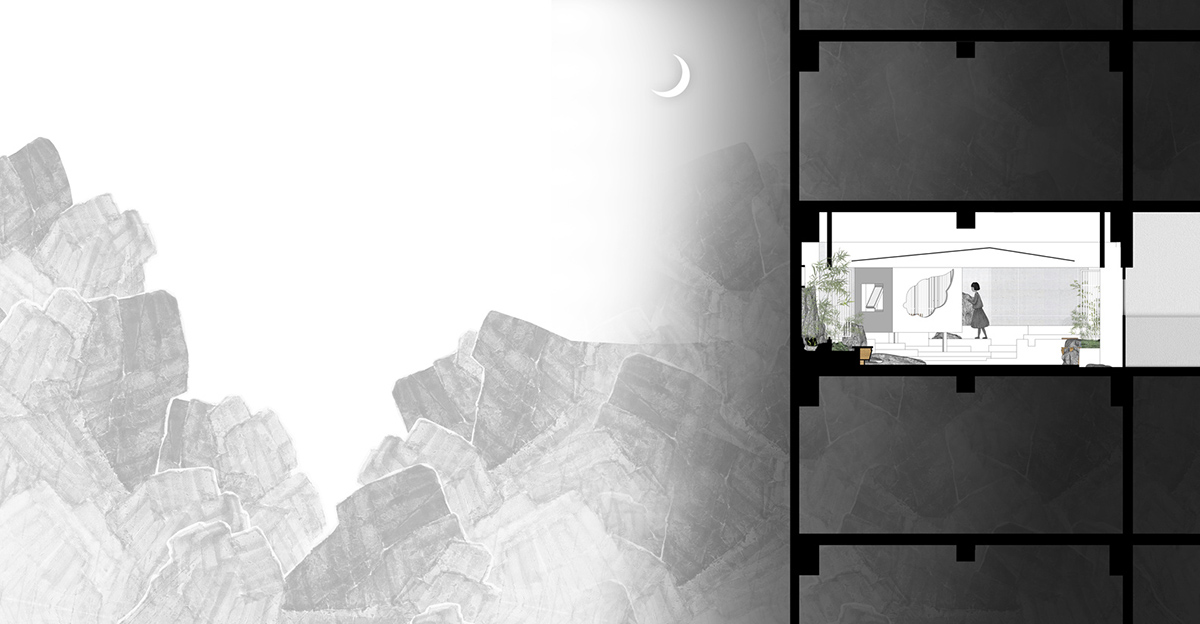
Section
Project facts
Project name: Pushe Tea Room
Architects: Jiejie studio
Size: 80m2
Location: Beijing, China
All images © Zhi Xia
> via Jiejie studio
